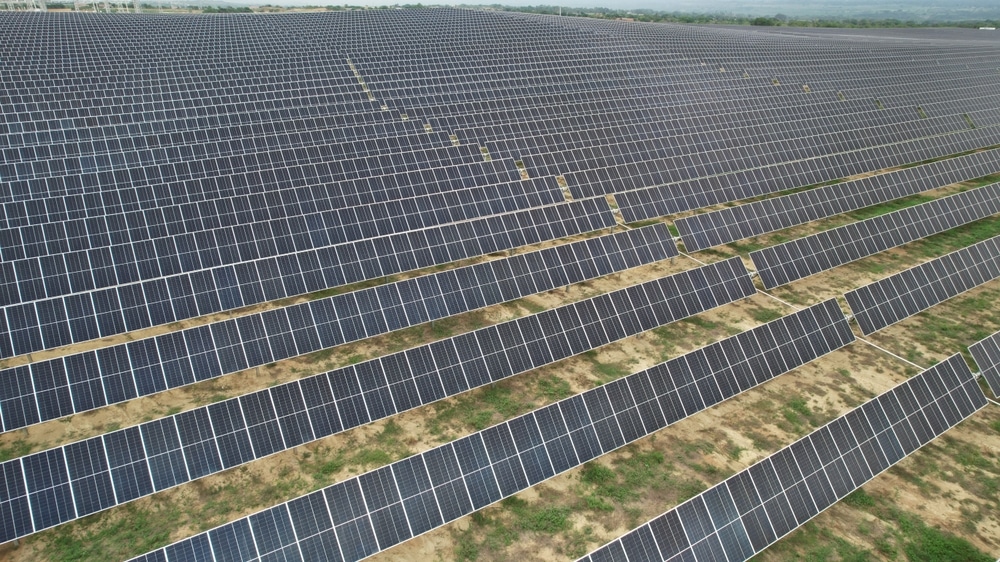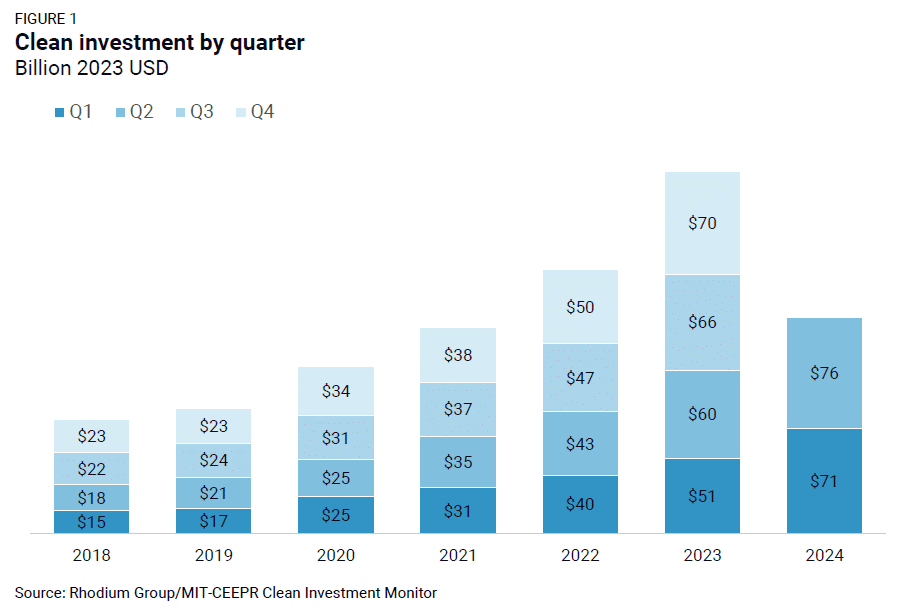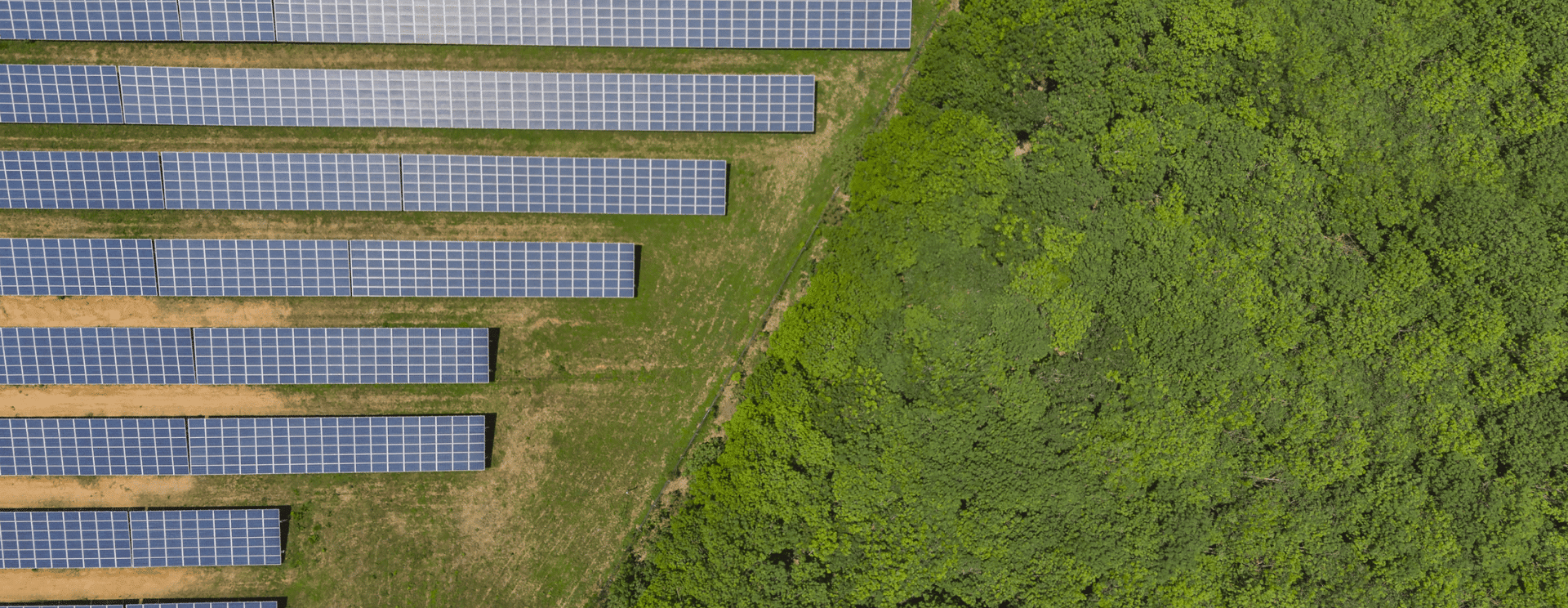Has the Solar Industry Improved Under Inflation Reduction Act?

When President Biden signed the Inflation Reduction Act (IRA) into law on August 16, 2022, it opened the door for a clean energy renaissance.
Since then, a flurry of activity has occurred, especially in the burgeoning solar industry. Many new manufacturers and solar installations are cropping up across the country, but has the IRA had the intended effect we thought it would?
What Did the Inflation Reduction Act Do?
From the get-go, the Inflation Reduction Act laid out several ambitious goals.
- Make solar adoption more affordable
- Increase domestic manufacturing
- Create solar jobs
In theory, the IRA would deliver the best of both worlds. The IRA instituted billions of dollars in programs, tax incentives, and development projects to bolster renewable energy production. Manufacturers also lined up, investing billions of their own dollars, with government support, to reshore solar development and production.
But beyond the basics, the IRA has given the industry and government several things to cheer about.
Solar Costs Drop
When the IRA took effect, the inflation rate was over 8%, making it harder for businesses to fund projects. Despite the high cost of borrowing, the Inflation Reduction Act enhanced and extended programs to make solar more affordable.
Among them were a series of tax credits, including Investment Tax Credits (ITCs) and Production Tax Credits (PTCs). Solar EPCs can claim ITCs upfront based on system costs. PTCs, meanwhile, are based on the amount of electricity produced over the project’s first 10 years.
Every project is different, but deciding which credit makes more sense depends on project size, power output, and eligibility.
Other credits encourage investments in low-income areas, rural communities, and abandoned sites like brownfields. These projects create jobs in underserved communities, add formerly abandoned sites to the tax rolls, and improve access to low-cost electricity.
At the same time, utility-scale solar costs have leveled out in recent years, according to the National Renewable Energy Laboratory. Other costs, including labor and permitting, have also been resilient.
Meanwhile, several tax credits tied to prevailing wages and brownfield development have helped lower costs.
Domestic Manufacturing Blossoms
As part of the IRA, the Biden administration pushed for more domestic solar manufacturing. So far, the Inflation Reduction Act has done what it intended to do.
The IRA introduced Advanced Manufacturing Production Tax Credits for solar energy, which ties incentives to producing renewable components. Also known as 45X MPTC, manufacturers receive the credit per unit produced and sold. Eligible products include solar photovoltaic (PV) modules, inverters, batteries, trackers, and critical minerals.
Another tax credit helping manufacturers is the Advanced Energy Project Credit (48C ITC). Like the previously mentioned credit, this applies to manufacturers building or upgrading facilities. However, it incentivizes companies to outfit their buildings or facilities with greener installations. These installations must reduce greenhouse gas emissions by 20% through low- or zero-carbon heat systems.
Although the two credits cover different aspects of solar energy, companies cannot take both.
Spurring Investment
Beyond tax credits, the IRA allows more public/private investments to produce renewables.
According to the White House, companies have announced about $265 billion in clean energy projects since August 2022. Many of those projects are in areas living below the median household average, bringing high-paying jobs and low-cost energy to underserved communities.
Other information from the Clean Investment Monitor tells a similar story. In the first half of 2024, companies invested $147B into clean energy manufacturing and deployment. The amount has increased dramatically each year since 2022 as companies find ways to incorporate renewables into manufacturing, energy production, and operations.
From opening new manufacturing facilities to upgrading critical infrastructure, solar and other renewables are thriving under the IRA.
Bringing Back Jobs
One of the most attractive features of the IRA was its ability to create manufacturing and skilled labor jobs.
Since August 2022, the IRA has helped launch 330,000 new clean energy jobs. Manufacturing jobs are also coming home as the U.S. attempts to wean itself from overseas solar panels from Asia.
Facts and Figures: Assessing the IRA’s Impact
One way to analyze how well the Inflation Reduction Act has performed so far is to look at the metrics.
What have we seen over the past 24 months, and is it enough to call the law successful?

Renewable Investments are Way Up
Clean energy investments totaled about $147 billion through June 2024.
Though the number is impressive, it’s more exciting when compared to investment figures before the IRA. In 2021, clean energy only garnered about $141 billion for the entire year. Seeing the number eclipsed in half the time is wildly impressive.
All told, clean energy projects have pulled nearly $500 billion in investments. Some of the most welcome growth came from the manufacturing and transportation technology industries, with $89 billion invested. The total was more than four times the amount in the two years leading up to the IRA.
More Projects Coming Online
Officials have announced hundreds of projects across at least 40 states, with many tied to solar, wind, electric vehicles (EVs), and battery storage.
According to RMI Analysis, the government has only disbursed about $66 billion in funds through the first half of 2024. More projects will come online in the next few years, including an estimated 320 GW of clean energy projects.
More importantly, as new manufacturers and clean energy projects launch, added jobs will become available. RMI expects the solar industry alone will need 500,000 workers by 2033, doubling the number of jobs available today. As a result, we need more educational and certification programs today to develop tomorrow’s workers.
Better Grid Resilience
What good is generating a ton of renewable energy if the current electrical grid can’t support it?
The IRA has provided a lifeline for grid operators to improve the grid. As more green energy comes online, including wind farms and utility-scale solar power, the grid must support it. That means investing in efficient power plants and transmission and distribution lines to move electricity effectively.
Grid resilience could take several forms. One choice is to add to the grid to help it accommodate more electricity. Expanding the grid is not popular, as substations and massive transmission lines cause problems for communities.
Another possibility is to improve transmission lines with new conductors. Most conductors crisscrossing the United States are aluminum wrapped around a steel core. The conductor design is over a century old (the patent is from 1908), so minor improvements could go a long way.
A third option is to add more microgrids. Microgrids are small community grids that can run independently. If a storm takes down the larger grid, a microgrid can disconnect to still provide power to homes and businesses.
The goal is to equip rural communities with microgrids powered by renewables and energy storage. Residents get reliable, low-cost energy produced close to home, and utilities can use microgrids to quickly pinpoint and correct problems during an emergency.
Because the grid is such a critical piece of infrastructure, the government is stepping up to help. Luckily, the IRA and Bipartisan Infrastructure Law combine to create the largest investment in the power grid’s history. The laws will upgrade and rebuild infrastructure to accommodate new technology, expand service, and increase resiliency.
Not All Sunshine
No legislation is perfect, and the Inflation Reduction Act has shortcomings.
Though the law does a lot for the green energy community, there are several holes, including some outside its control.
The Rules Can Be Murky
No government initiative would be complete without endless confusing and difficult rules.
Between understanding how to qualify for the ITC and PTCs, navigating community, county, state, and federal regulations, and chasing down funding, getting projects off the ground is slow. Worse yet, the ITC and PTC dollars are sometimes not easy to qualify for and will only get harder to reach in later years.
Despite the occasional trouble, companies have invested billions of dollars into developing a vibrant solar energy industry.
Interest Rates Are Still High
The long-term solar industry is growing by leaps and bounds, but high interest rates temper some investments.
High interest rates make projects, facilities, and infrastructure upgrades more expensive. Everything comes with an extra added cost, potentially leading to delays or cancellations for builds.
High interest rates have also resulted in a sharper increase in solar LCOE compared to fossil fuels. Though solar is experiencing an uptick in cost, fossil fuels still have a higher LCOE, making solar and other renewables more cost-efficient over the long run.
Additionally, anticipated rate cuts in the coming months may kickstart investments in other projects, keeping the good times rolling. Investments are booming dramatically under the IRA despite currently high interest rates.
We Still Rely on Others for Panels
In June 2022, the Biden administration issued a two-year moratorium on solar panels from four Asian countries to keep projects going while domestic manufacturers caught up.
The temporary pause is over, and new tariffs have been added to overseas solar products.
Why? To protect a bevy of new manufacturers in the U.S. Without tariffs, cheap solar panels could flood the U.S. market, driving domestic manufacturers out of business.
While solar manufacturing is making headway in the U.S., the industry cannot compete with low-cost panels. Tariffs keep the playing field even until U.S. manufacturers can sufficiently meet demand.
Despite the tariffs and occasionally frosty relationship with China, the United States relies on many solar products. China controls roughly 80% of the global solar supply, from raw material sourcing to finished goods.
Prices could skyrocket if solar EPCs and other installers lose access to overseas solar panels. American-made products are high quality but come at a high cost – sometimes too high for a budget to absorb.
Spiking prices could cripple U.S. solar expansion until the domestic manufacturing supply chain catches up.
Looking to the Future
All things considered, renewable energy is moving in the right direction.
Domestic manufacturing is increasing, and public/private investments are pouring in. Under the IRA and other initiatives, the industry should reliably expand over the next decade. Costs are stable, the government has incentivized expansion and development, and consumers are saving money in the long run.
Though the long-term prospects look good, the upcoming 2024 election could affect the future of renewables. Depending on who assumes office and what agendas are announced, portions of the IRA could be rolled back or scrapped entirely.
Overall, the IRA has done its job. Solar and renewable investments are exploding, the industry is vibrant, and there is real hope for a carbon-neutral future.


